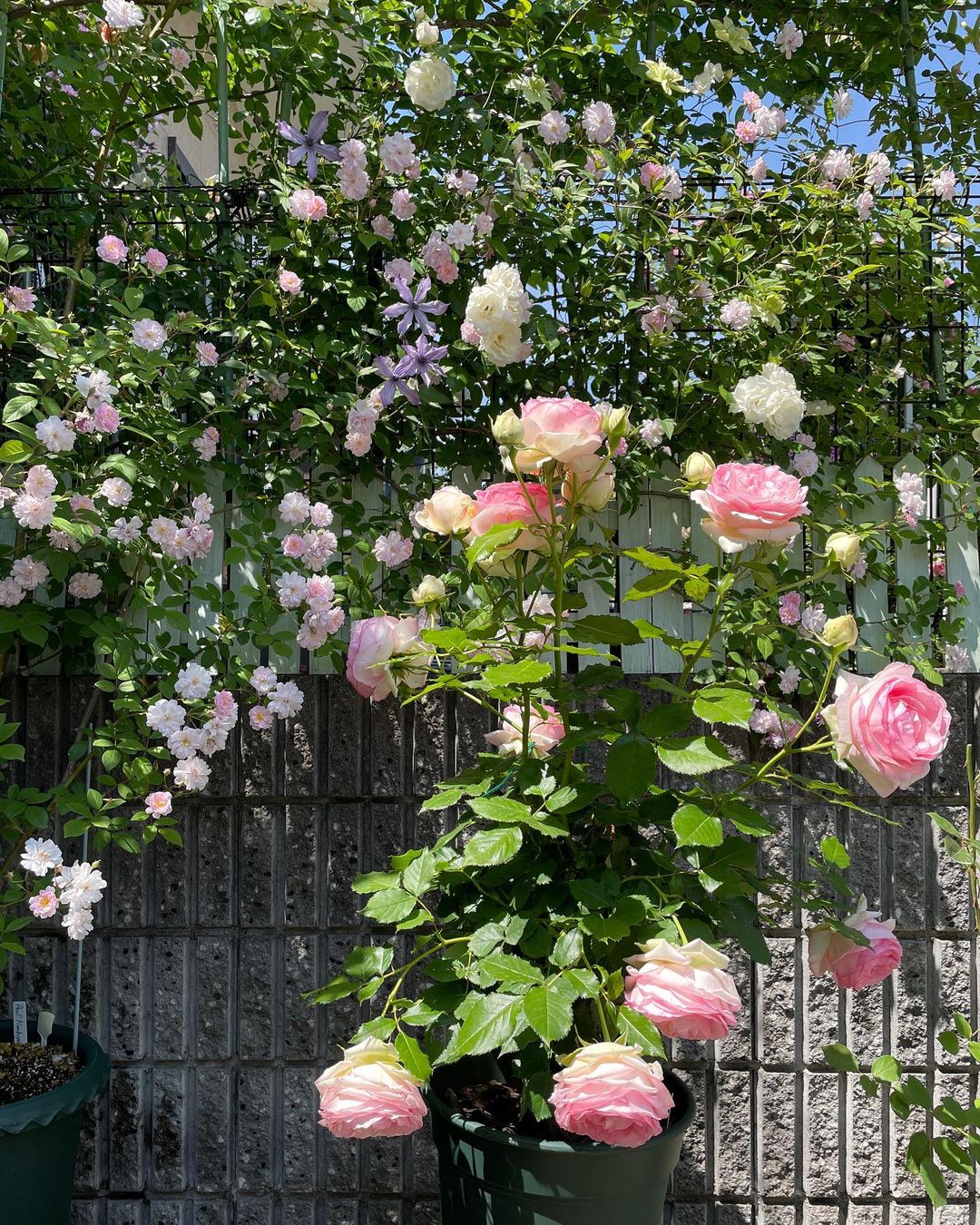When it comes to adding a touch of timeless elegance to gardens, few choices are as captivating as roses. Among the myriad varieties, Rambler Roses and Climbing Roses stand out for their ability to scale structures and create breathtaking vertical displays. But what sets these two stunning types apart? In this exploration of the Differences Between Rambler Roses and Climbing Roses, we’ll unravel the unique characteristics and growing habits that define each, helping you choose the perfect one for your garden’s aesthetic and needs.
Whether you’re envisioning a picturesque pergola draped in blooms or a garden archway adorned with fragrant flowers, understanding the distinctions between Rambler Roses and Climbing Roses is crucial. From blooming patterns to pruning techniques, each type offers its own set of virtues and challenges. Dive into this guide to discover how these roses can transform your green space into a floral paradise.
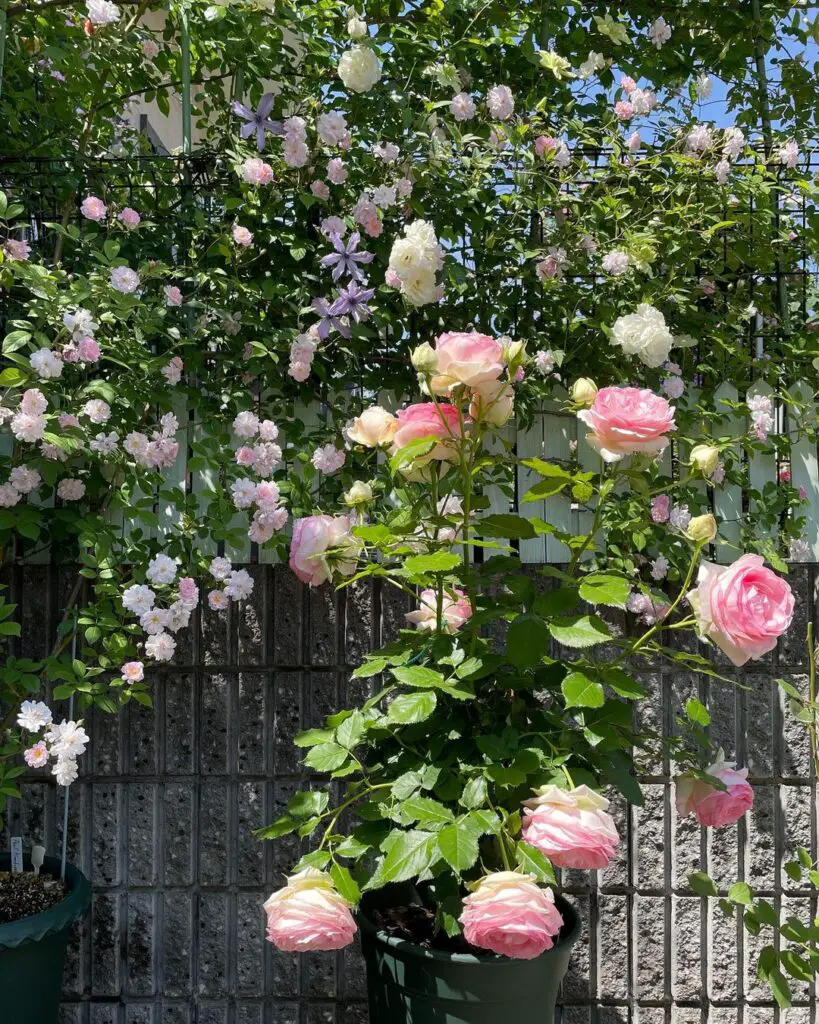
Differences Between Rambler Roses And Climbing Roses
We’ll discuss the topic step by step. So, bear with us, and let’s dive into it:
What Are Rambler Roses?
Rambler Roses are a vigorous and fast-growing type of climbing rose, known for their ability to cover large areas quickly. Unlike other climbing roses, they can produce canes that grow up to 20 feet or more in a single season, making them ideal for covering fences, walls, and trellises.
One of the defining characteristics of Rambler Roses is their profuse blooming. They typically produce small, clustered flowers in large quantities, creating a stunning visual display. Most varieties bloom once a year, usually in early summer, but the sheer volume of flowers makes this brief period exceptionally striking.
Rambler Roses are also notable for their flexibility and ease of training. Their pliable canes can be easily directed and tied to support structures, allowing gardeners to shape them as desired. This flexibility makes them a popular choice for creating natural-looking, sprawling rose displays.
In terms of care, Rambler Roses are relatively low-maintenance. They are generally more disease-resistant than many other rose types and can thrive in a variety of soil conditions. However, they do require regular pruning to manage their rapid growth and to remove dead or damaged wood.
Popular varieties of Rambler Roses include ‘Dorothy Perkins’, known for its cascading pink blooms, and ‘American Pillar’, famous for its vibrant red flowers with white centers. These varieties, among others, offer diverse color options to suit different garden designs.
Rambler Roses, with their robust growth and spectacular blooming, provide an excellent option for gardeners looking to add dramatic, vertical elements to their landscapes. Their ability to cover structures and produce abundant flowers makes them a favorite for creating enchanting garden scenes.
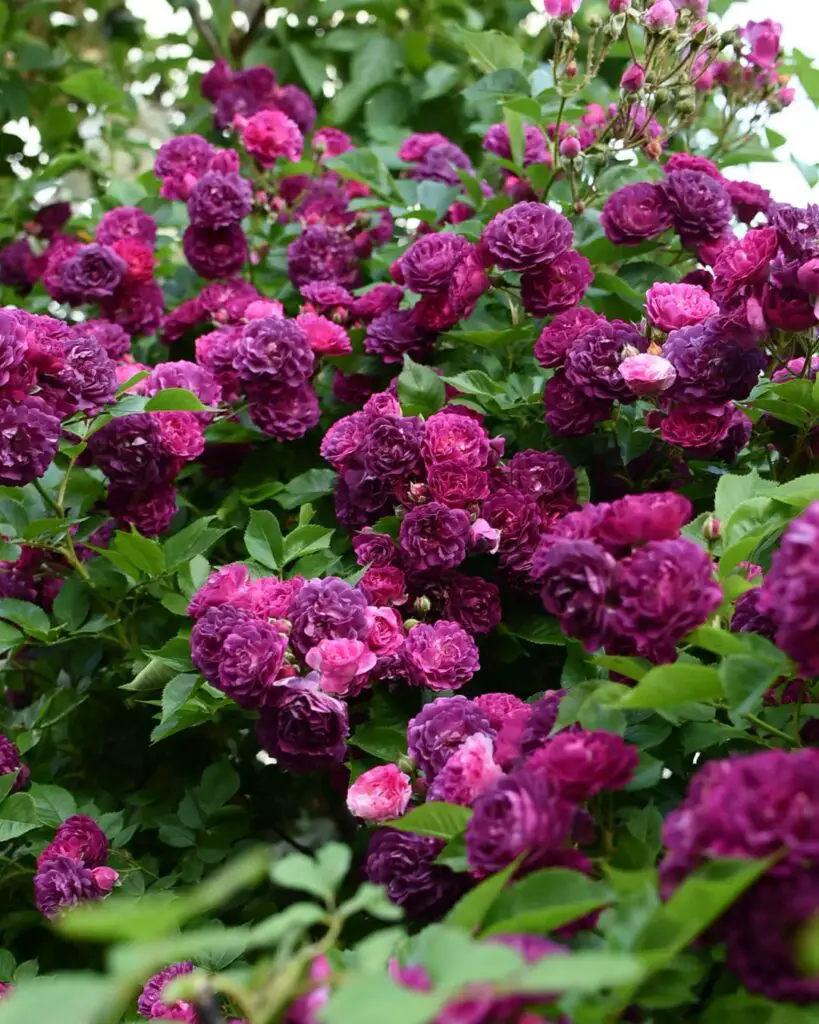
What Are Climbing Roses?
Climbing Roses are a group of roses known for their ability to produce long, arching canes that can be trained to grow on trellises, fences, and walls. Unlike true vines, these roses do not naturally cling to structures but need support and guidance to achieve their vertical growth.
These roses are highly valued for their vigorous growth and the dramatic effect they create when in full bloom. They can reach heights of 8 to 20 feet or more, depending on the variety and growing conditions. Common varieties include ‘Iceberg’, ‘Don Juan’, and ‘New Dawn’, each offering different bloom colors and forms.
Blooming patterns of Climbing Roses vary, with some varieties blooming once a season while others, known as repeat bloomers, produce flowers throughout the growing season. They typically produce larger blooms than their Rambler counterparts, making them a striking addition to any garden.
Pruning is essential for Climbing Roses to maintain their shape and encourage healthy growth. The best time to prune is late winter or early spring before new growth begins. Regular pruning helps to remove dead or weak canes, promote air circulation, and enhance flowering.
When planting Climbing Roses, it’s crucial to select a sunny location with well-drained soil. They thrive in spots that receive at least six hours of direct sunlight per day. Providing adequate support from the start helps guide their growth and achieve the desired coverage.
Overall, Climbing Roses are an excellent choice for gardeners looking to add vertical interest and an abundance of blooms to their outdoor spaces. With proper care and support, they can transform ordinary structures into stunning floral displays.
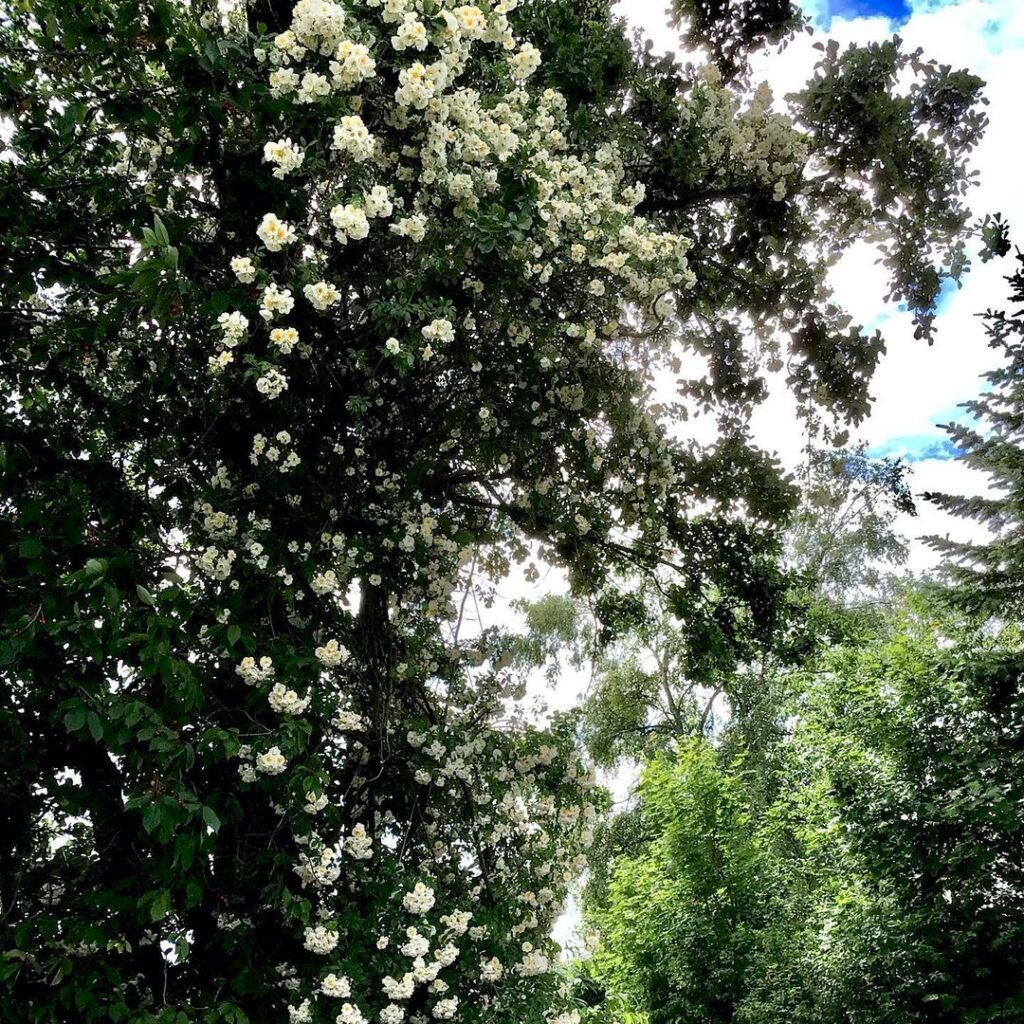
Differences Between Rambler Roses and Climbing Roses
Height
Rambler Roses are known for their vigorous growth and can reach impressive heights, often between 15 to 30 feet. They are ideal for covering large structures like pergolas and arbors. In contrast, Climbing Roses typically grow to a more modest height of 8 to 12 feet. Their growth habit makes them suitable for smaller garden features such as trellises and fences.
Soil
Both Rambler and Climbing Roses prefer well-drained, fertile soil. However, Rambler Roses are more tolerant of poorer soil conditions and can thrive in less ideal environments. Climbing Roses, on the other hand, benefit significantly from richer soil with a higher organic content. Adding compost or well-rotted manure can improve their growth and flowering.
Growing Conditions
Rambler Roses are incredibly hardy and can grow in a variety of conditions, including partial shade. They are particularly well-suited to cooler climates and can withstand harsher winters. Climbing Roses prefer full sun and are best grown in areas where they receive at least six hours of direct sunlight daily. They thrive in temperate climates and may require protection in regions with extreme winters.
Flowering System
One of the main differences between Rambler and Climbing Roses lies in their flowering systems. Rambler Roses typically bloom once a year in a spectacular, dense display of flowers that cover the entire plant. This bloom period usually occurs in early summer and can last several weeks. Climbing Roses, on the other hand, often have a repeat-flowering habit. They can bloom multiple times throughout the growing season, providing a continuous display of flowers from late spring to autumn.
Watering Method
Both types of roses require regular watering, especially during dry periods. Rambler Roses are more drought-tolerant once established, needing deep watering once a week. Climbing Roses require consistent moisture levels to ensure continuous blooming. Watering deeply twice a week, ensuring the soil remains evenly moist but not waterlogged, is ideal for Climbing Roses.
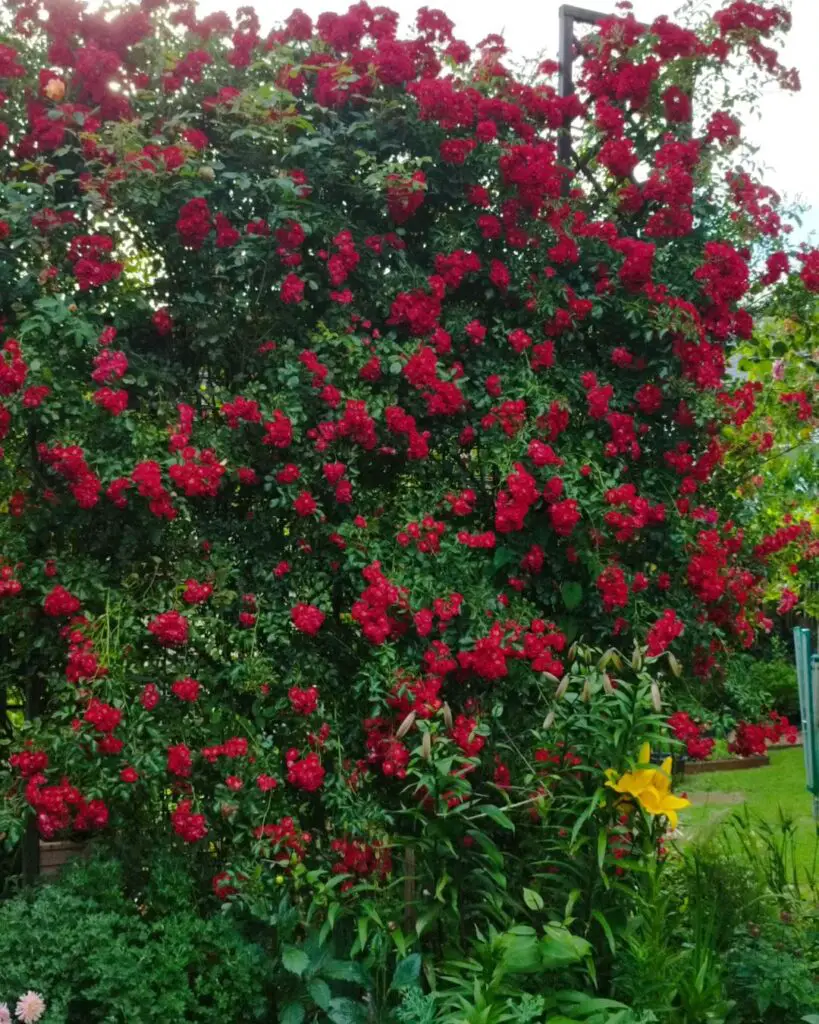
Pruning Ways
Pruning techniques for these roses differ due to their growth habits. Rambler Roses require minimal pruning. Pruning is usually done after their once-a-year flowering, focusing on removing old, woody stems to encourage new growth. Climbing Roses need more regular pruning to maintain their shape and promote continuous blooming. This involves removing dead or diseased wood in late winter or early spring and trimming back lateral shoots after flowering to encourage new blooms.
Location
Rambler Roses thrive in locations where they can spread extensively. They are ideal for covering large areas such as fences, trellises, and pergolas due to their vigorous growth. These roses can grow up to 20 feet or more in a single season. In contrast, Climbing Roses are best suited for smaller spaces where vertical growth is desired. They typically reach heights between 8 to 12 feet and require sturdy support structures like arbors, walls, or garden arches.
Planting Techniques
When planting Rambler Roses, it’s important to provide ample space for their extensive root systems and sprawling canes. They benefit from a deep planting hole, around 18 inches wide and deep, to accommodate their growth. Rambler Roses should be planted in well-draining soil and require full sun for optimal flowering.
Climbing Roses, on the other hand, need careful placement to ensure they can attach to their support structures. They should be planted about 18 inches away from walls or fences to allow air circulation and prevent fungal diseases. The planting hole should be similar in size to that for Rambler Roses, and the soil should be enriched with compost to support healthy growth.
Uses
Rambler Roses are perfect for creating dramatic, cascading effects over large structures. They are often used to cover unsightly buildings, create privacy screens, and add a romantic, old-world charm to gardens. Due to their extensive growth, Rambler Roses can also be trained to grow over trees, adding a unique vertical element to the landscape.
Climbing Roses are more suited for smaller garden features where a controlled vertical element is desired. They are commonly used to adorn arbors, trellises, and garden walls, creating eye-catching focal points. Climbing Roses can also be trained to grow horizontally along fences, offering a versatile option for various garden designs.
Types
Popular types of Rambler Roses include ‘American Pillar,’ known for its striking single pink flowers, and ‘Dorothy Perkins,’ which boasts clusters of small, double pink blooms. These varieties are renowned for their rapid growth and prolific blooming.
Climbing Roses, such as ‘New Dawn’ and ‘Don Juan,’ offer a different appeal. ‘New Dawn’ is celebrated for its soft pink, fragrant flowers and vigorous growth, while ‘Don Juan’ is prized for its deep red, velvety blooms. Climbing Roses often bloom repeatedly throughout the season, providing a longer display compared to the once-blooming Ramblers.

| Aspect | Rambler Roses | Climbing Roses |
|---|---|---|
| Blooming Season | Typically bloom once per season in a massive display. | Bloom repeatedly throughout the growing season. |
| Flower Size | Generally have smaller flowers in large clusters. | Tend to have larger flowers, often borne singly or in small groups. |
| Growth Habit | Produce long, flexible canes that can reach up to 20 feet or more. | Have stiffer canes that are easier to train and usually reach 8-12 feet. |
| Pruning | Require minimal pruning, mainly to remove old wood after blooming. | Need regular pruning to manage size and encourage blooms. |
| Support Needed | Best grown on structures like pergolas, arches, and trellises. | Ideal for training on walls, fences, and trellises. |
| Thorniness | Often have fewer thorns, making them easier to handle. | Can be more thorny, requiring careful handling. |
| Disease Resistance | Generally more disease-resistant due to their vigorous growth. | Varies widely, with some varieties being more susceptible to diseases. |
| Historical Use | Popular in cottage gardens and traditional landscapes. | Favored in formal gardens and modern landscape designs. |
| Propagation | Usually propagated by layering or cuttings. | Commonly propagated by grafting or cuttings. |
| Fragrance | Often less fragrant than climbing roses. | Many varieties are highly fragrant, adding sensory appeal. |
Understanding these differences can help gardeners make informed decisions about which type of rose best suits their garden design and maintenance preferences.
Frequently Asked Questions
What are the primary differences between Rambler Roses and Climbing Roses?
Rambler Roses typically bloom once a season in a spectacular display, while Climbing Roses often have repeat blooming cycles. Ramblers are more vigorous and can cover large areas quickly, making them ideal for expansive spaces, whereas Climbers are more controlled and suitable for trellises and smaller structures.
How do the pruning needs of Rambler Roses and Climbing Roses differ?
Rambler Roses require minimal pruning, mostly focusing on removing old wood after flowering to encourage new growth. In contrast, Climbing Roses need regular pruning to maintain shape and promote blooming. Prune Climbers in late winter or early spring, removing dead or weak canes and trimming back to healthy buds.
Which type of rose is better for growing in shaded areas?
Rambler Roses are generally more tolerant of shaded areas than Climbing Roses. They can thrive in partial shade and still produce abundant blooms. Climbing Roses, however, prefer full sun to achieve their best growth and flowering potential. For shaded spots, Rambler Roses are often the better choice.
Can Rambler Roses and Climbing Roses be grown together?
Yes, Rambler Roses and Climbing Roses can be grown together to create a layered, dynamic garden display. Combining both types allows you to take advantage of their different blooming times and growth habits, resulting in a longer flowering season and a more varied visual appeal. Ensure they have enough space and support structures.
Conclusion
In summary, while both Rambler Roses and Climbing Roses bring vertical beauty to gardens, they differ significantly in their growth habits, blooming patterns, and care requirements. Rambler Roses are vigorous growers that produce a stunning single bloom each season, ideal for covering large areas.
On the other hand, Climbing Roses offer repeat blooms and more controlled growth, perfect for smaller structures. Understanding these differences allows gardeners to select the best type for their specific needs, ensuring a thriving and visually appealing rose garden.

I’m Shofi, a passionate gardener and blogger. I have 10+ years of experience in gardening and hold certifications in horticulture and garden design. I share my knowledge and skills through my garden blog to inspire and educate others on the joys of gardening. I try to provide valuable information and create a community for gardeners of all levels to connect and learn. My ultimate goal is to inspire others to start their own gardens and connect with nature.

